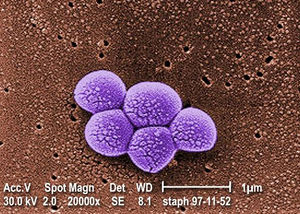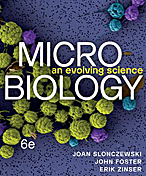Equine Development of Gut Microbiota: Difference between revisions
No edit summary |
No edit summary |
||
| Line 1: | Line 1: | ||
Topic: equine development of gut microbiota | Topic: equine development of gut microbiota | ||
| Line 5: | Line 4: | ||
[[Image:Mrsa_magn_lg.jpg|thumb|300px|right|Magnified 20,000X, this colorized scanning electron micrograph (SEM) depicts a grouping of methicillin resistant <i>Staphylococcus aureus</i> (MRSA) bacteria. See PHIL 617 for a black and white view of this image. Phoro credit: [http://www.cdc.gov/ CDC.]]] | [[Image:Mrsa_magn_lg.jpg|thumb|300px|right|Magnified 20,000X, this colorized scanning electron micrograph (SEM) depicts a grouping of methicillin resistant <i>Staphylococcus aureus</i> (MRSA) bacteria. See PHIL 617 for a black and white view of this image. Phoro credit: [http://www.cdc.gov/ CDC.]]] | ||
<b>By | <b>By Mira Allen <br> | ||
<br>At right is a sample image insertion. It works for any image uploaded anywhere to MicrobeWiki.<br><br>The insertion code consists of: | <br>At right is a sample image insertion. It works for any image uploaded anywhere to MicrobeWiki.<br><br>The insertion code consists of: | ||
<br><b>Double brackets:</b> [[ | <br><b>Double brackets:</b> [[ | ||
Revision as of 15:10, 23 February 2024
Topic: equine development of gut microbiota
In utero, horses intestinal tracts are close to sterile. Soon after birth, however, microbial colonization skyrockets. Proper colonization lasts about 50 days, and is incredibly important as improper microbial gut content can result in inflammation and metabolic disease [1]. Equine hind-gut microbiota enable nutritional optimization from an otherwise nutrient-poor foraging diet via plant material fermentation [2]. The initial colonization, stabilization, and then weaning period (4-6 months old) as a foal transfers to solid food are important periods in establishing the microbial composition of the colon [1].

By Mira Allen
At right is a sample image insertion. It works for any image uploaded anywhere to MicrobeWiki.
The insertion code consists of:
Double brackets: [[
Filename: PHIL_1181_lores.jpg
Thumbnail status: |thumb|
Pixel size: |300px|
Placement on page: |right|
Legend/credit: Magnified 20,000X, this colorized scanning electron micrograph (SEM) depicts a grouping of methicillin resistant Staphylococcus aureus (MRSA) bacteria. Photo credit: CDC. Every image requires a link to the source.
Closed double brackets: ]]
Other examples:
Bold
Italic
Subscript: H2O
Superscript: Fe3+
Sample citations: [1]
[2]
A citation code consists of a hyperlinked reference within "ref" begin and end codes.
To repeat the citation for other statements, the reference needs to have a names: "<ref name=aa>"
The repeated citation works like this, with a forward slash.[1]
